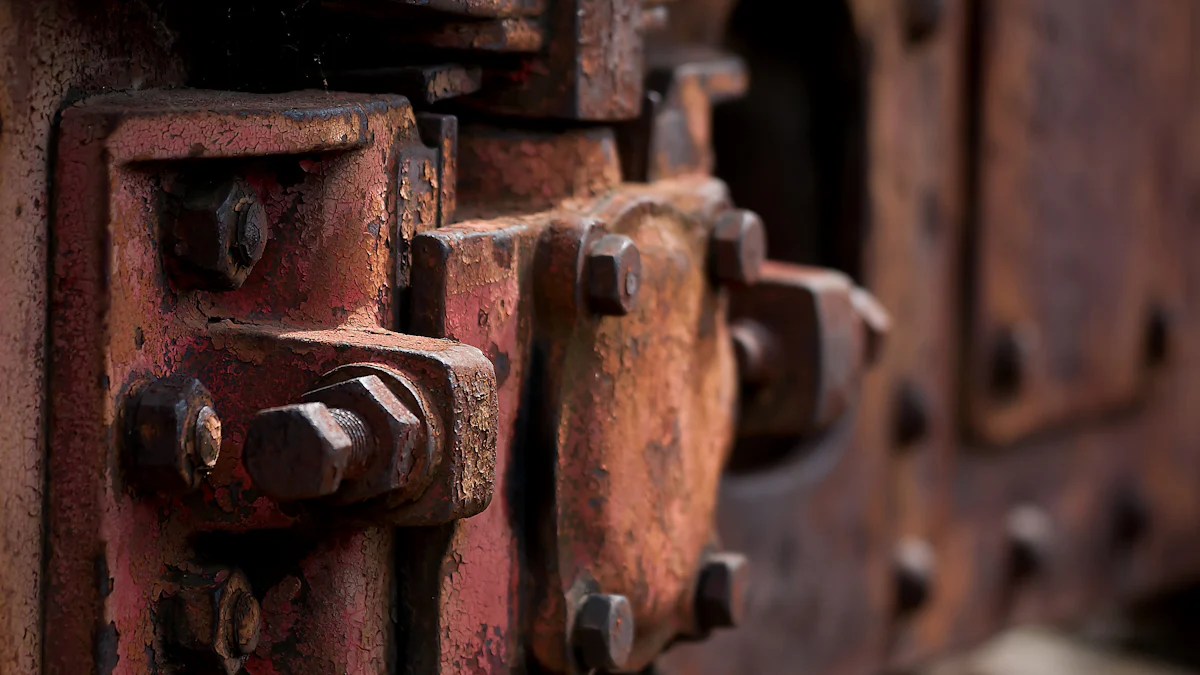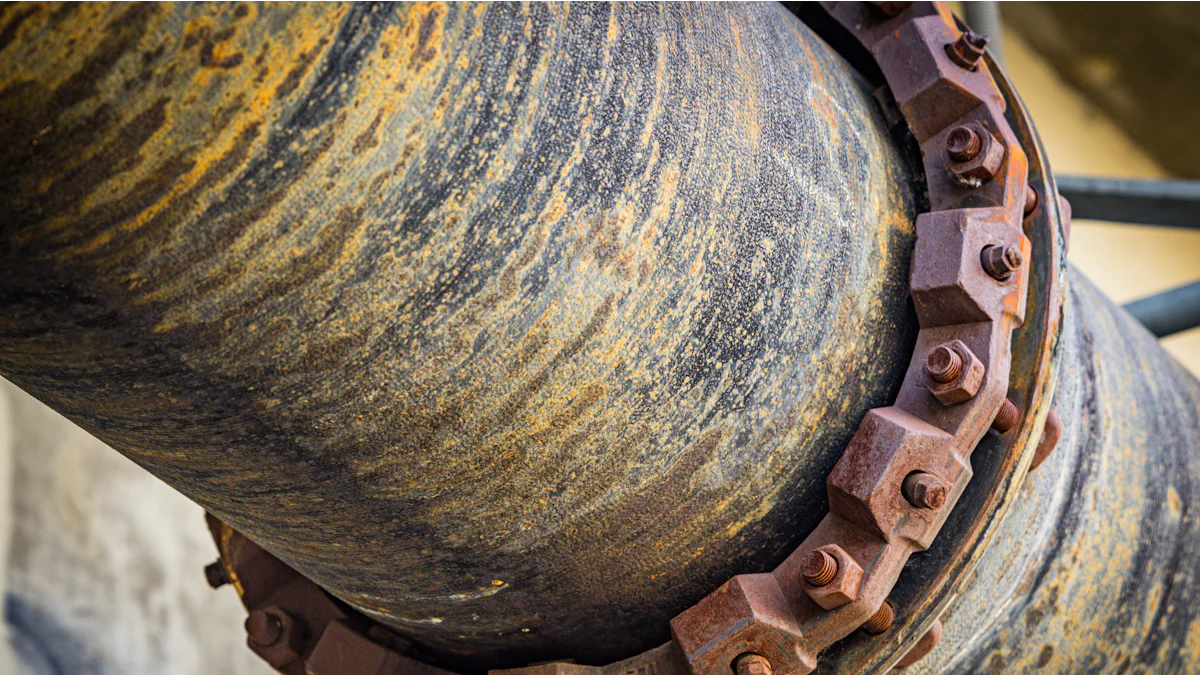
News
Removing rusted bolts has never been easier, thanks to the heat induction tool. These tools utilize an Induction Heating Machine that employs electromagnetic induction to heat metal quickly and precisely, targeting only the bolt while safeguarding surrounding components. In 2025, advancements such as Canroon's IGBT Induction Heating Equipment and innovative Portable Induction Heater designs will provide safer, faster, and eco-friendly solutions for your toughest projects.
Key Takeaways
Heat induction tools use magnetic energy to heat rusted bolts fast. They keep nearby parts safe from harm.
Picking the right heater means looking at features like adjustable heat, easy carrying, and safety approvals to fit your needs.
These heaters are good for the environment, with no smoke. They save time and are great for workers and hobbyists.
What Are Heat Induction Tools?

Heat induction tools are specialized devices designed to heat metal objects, such as rusted bolts, using electromagnetic induction. These tools have become essential for automotive and mechanical tasks, offering a precise and efficient way to loosen stubborn bolts without damaging surrounding components.
How Induction Heaters Work
An induction heater operates on the principle of electromagnetic induction. When you place a conductive material, like a rusted bolt, inside the induction coil, the coil generates a magnetic field. This field induces circulating eddy currents within the metal. The electrical resistivity of the material converts these currents into heat, raising the temperature of the bolt quickly and efficiently. Unlike traditional methods, induction heating does not require direct contact or open flames, making it safer and more controlled. The system typically includes a power supply that converts electricity into alternating current, creating the electromagnetic field necessary for heating.
Benefits of Using a Heat Induction Tool for Rusted Bolts
Using a heat induction tool provides several advantages. It heats only the bolt, protecting nearby components from damage. The process is fast, often taking just seconds to loosen rusted bolts. You also avoid the risks associated with open flames or hazardous chemicals. Additionally, these tools are versatile, with various sizes and designs available for different applications. Their eco-friendly nature, producing no emissions, makes them a sustainable choice for modern mechanical work.
Why Induction Heaters Are Better Than Traditional Methods
Induction heaters outperform traditional methods in several ways. They offer unmatched efficiency by targeting only the metal object, reducing the risk of collateral damage. A comparison table highlights the key differences:
Induction heaters also convert most energy into heat, minimizing waste. Their design eliminates direct contact between the coil and the object, enhancing safety. These features make them the superior choice for removing rusted bolts.
How to Choose the Best Induction Heater
Key Features to Look For
When selecting the best induction heater, focus on features that match your needs. Look for tools with adjustable temperature control to handle different bolt sizes and materials. Ensure the heating range and coil sizes are compatible with your tasks. Portability is essential if you work in multiple locations. Safety features like automatic shut-off and overheating protection are crucial for preventing accidents. A durable design ensures long-term reliability.
Power Output and Efficiency
The power output of an induction heater determines its performance. Higher wattage models heat bolts faster, saving time during repairs. Choose a tool with efficient energy conversion to minimize waste. For heavy-duty applications, select a heater with consistent temperature control to avoid overheating or underheating the bolt.
Portability and Ease of Use
A portable induction heater offers flexibility for automotive and mechanical work. Lightweight models are easier to carry, especially in tight spaces. Tools with ergonomic designs and simple controls enhance usability. Portability also reduces setup time, allowing you to focus on the task at hand.
Safety Features and Certifications
Safety features protect you and your equipment. Automatic shut-off prevents overheating, while insulation safeguards against accidental burns. Look for certifications that ensure reliability. For example, tools tested for resistance to heat, electrical leakage, and mechanical strength provide peace of mind. The table below highlights key safety tests:
Budget Considerations
Your budget plays a significant role in choosing the best induction heater. While high-end models offer advanced features, affordable options can still deliver reliable performance. Consider long-term savings from features like durable coils and energy efficiency. Portable models also eliminate gas expenses, making them cost-effective for frequent use.
Top Heat Induction Tools for Rusted Bolts in 2025

Mini-Ductor II - Features, Pros, and Cons
The Mini-Ductor II stands out for its robust design and portability. This heat induction tool heats metal quickly and efficiently, making it ideal for removing rusted bolts in tight spaces. You can rely on its safety certifications and flameless operation to work around sensitive areas without worry. It heats ferrous metals like iron and steel in just 3 to 15 seconds, saving you time and effort.
Pros:
Rapid heating for quick results.
Compact design for hard-to-reach areas.
Certified for safe operation.
Cons:
Limited to smaller bolts due to its size.
May not perform as well on non-ferrous metals.
Solary Induction Tool - Features, Pros, and Cons
The Solary Induction Tool offers a safe alternative to torches, especially when working near wiring harnesses or fuel tanks. While it may take longer than advertised to heat larger bolts, it effectively loosens them without damaging surrounding components. This tool eliminates the risks associated with open flames, making it a versatile choice for stubborn hardware.
Pros:
Efficient and safe for sensitive areas.
Versatile for various applications.
Cons:
Requires manual monitoring due to the lack of a timer.
Slower heating for larger bolts.
Bolt Buster - Features, Pros, and Cons
The Bolt Buster delivers exceptional power and efficiency, making it a reliable choice for removing rusted bolts. Its advanced coil kit provides multiple options for different tasks, while its high power output ensures quick heating. However, it may not be suitable for everyday use.
Pros:
Powerful and efficient for tough bolts.
Safe for use around sensitive components.
Cons:
Slower heating for larger bolts.
Best suited for occasional use.
VEVOR Magnetic Induction Heater Kit - Features, Pros, and Cons
The VEVOR Magnetic Induction Heater Kit combines efficiency, safety, and versatility. Its precise heating minimizes damage to nearby components, making it perfect for frozen body mount bolts. The kit includes various coil sizes, allowing you to tackle different tasks with ease. Its durable design ensures long-term reliability, whether you’re a professional or a DIY enthusiast.
Pros:
Rapid and precise heating.
Durable and versatile coil options.
Safe for tight spaces.
Cons:
Specific weaknesses are not well-documented.
Inductor Pro-Max - Features, Pros, and Cons
The Inductor Pro-Max offers unmatched performance and energy efficiency. Its high-powered induction heat inverter maximizes the use of a 120V/20A circuit, while features like fine-tuning linear power control and a pneumatic foot switch enhance usability. This tool reduces labor by up to 75% and eliminates the need for toxic solvents, making it an eco-friendly option.
Pros:
High performance with precise control.
Reduces labor and environmental impact.
Cons:
Higher price point compared to other tools.
Heat induction tools have become essential for removing rusted bolts. They offer unmatched efficiency, speed, and safety compared to traditional methods. You can rely on their flameless operation to protect surrounding components while working. These tools also produce no emissions, making them environmentally friendly. Choosing the right tool depends on your needs, including power, portability, and budget. The options highlighted here ensure you can handle even the toughest bolts with precision and safety.
FAQ
What makes heat induction tools safer than traditional methods?
Heat induction tools eliminate open flames and hazardous chemicals. You can safely use them near sensitive components like wiring or fuel tanks without risking damage.
Can I use a heat induction tool on all types of bolts?
Most tools work best on ferrous metals like steel or iron. For non-ferrous bolts, check the tool's specifications to ensure compatibility.
How do I maintain my heat induction tool for long-term use?
Keep the coils clean and inspect them regularly for wear. Store the tool in a dry, dust-free area to prevent damage. Follow the manufacturer's maintenance guidelines.
Previous:
Next:
Please give us a message